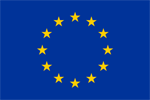AUTOMATION OF MATHEMATICAL KNOWLEDGE CONTROL WITHIN DYNAMIC MATHEMATICS PROGRAMS
DOI: 10.34916/el.2019.11.36
Olena Semenikhina Makarenko Sumy State Pedagogical University (Ukraine)
Volodymyr Proshkin Borys Grinchenko Kyiv University (Ukraine)
Marina Drushlyak Makarenko Sumy State Pedagogical University (Ukraine)
REFERENCES
- Bain, L., Xie, Y. (2010). Research on the Adaptive Strategy of Adaptive Learning System, Entertainment for Education. Digital Techniques and Systems, 6249, 203-214.
- Bellman, R. (1971). Introduction to the Mathematical Theory of Control Processes, Vol. II. New York: Academic Press.
- Bykov V., Shyshkina M. (2016). Theoretical and methodological principles of the cloud based university environment formation. Тheory and practice of social systems management, 2, 30-52.
- Cardos V., Tiron-Tudor, A. (2009) Managerial skills of an e-learning manager. Annals of Faculty of Economics, 4, 135-140.
- Craven, B. D. (2012). Mathematical programming and control theory. Springer, Dordrecht.
- Council Recommendation on Key Competences for Lifelong Learnin. (2018). Retrieved from http://ec.europa.eu/education/education-in-the-eu/council-recommendation-on-key-competences-for-lifelong-learning_en (accessed: 28 May 2019).
- European Framework for the Digital Competence of Educators (DigCompEdu). (2017). Retrieved from http://ec.europa.eu/jrc/en/publication/eur-scientific-and-technical-research-reports/european-framework-digital-competence-educators-digcompedu (accessed on: May 10, 2019).
- Güven B., Кosa Т. (2008). The effect of dynamic geometry software on student mathematics teachers’ spatial visualization skills. Turkish Online Journal of Educational Technology, 7, 100-107.
- Kolhatin О., Kolhatina L. (2013). Questions of the quality of testing procedures and interpretations of test results in the information and communication pedagogical space. Educational technologies and society, 1, 575-585.
- Kostolányová, K. (2013). Personalised Education Theory In E. Smyrnova-Trybulska (Ed.). E-learning & Lifelong Learning. (pp. 133 – 143). Katowice – Cieszyn: Studio-Noa for University of Silesia
- Morze N., Vember V. (2019). Implementation of peer assessment in educational process. Open educational e-environment of modern University, 6, 44-54.
- Mudaly V., Fletcher Т. (2019). Тhe effectiveness of Geogebra when teaching linear functions using the Ipad. Problems of education in the 21stcentury, 77(1), 55-81.
- Proshkin V., Semenikhina О. (2018). Application of computer mathematical tools in professional preparation of future teachers of mathematics. Open educational e-environment of modern University, 4, 61-73.
- Semenikhina О., Drushlyak M. (2014). On checking tools in the ige mathkit. Scientific Bulletin Melitopol State Pedagogical University. Series: Pedagogy, 2, 189-195.
- Smyrnova-Trybulska, E. (2018). Technologie informacyjno-komunikacyjne i e-learning we współczesnej edukacji. [Information and Communication Technologies and E-learning in Contemporary Education] Katowice: Wydawnictwo Uniwersytetu Śląskiego. (Pol)
- Sontag, Eduardo D. (2013). Mathematical control theory: deterministic finite dimensional systems. Springer Science & Business Media.
- Zengina Y., Furkanb Н., Kutlucaa Т. (2012). The effect of dynamic mathematics software geogebra on student achievement in teaching of trigonometry. Procedia – Social and Behavioral Sciences, 31, 183-187.
- UNESCO ICT competency framework for teachers. (2011). Retrieved from https://unesdoc.unesco.org/ark:/48223/pf0000213475 (accessed on: May 10, 2019).





